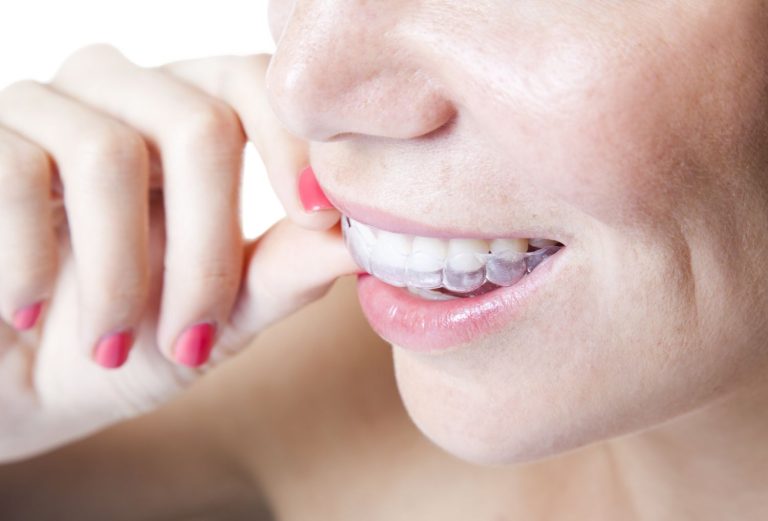If you’ve started your orthodontic journey with Invisalign, then you’ve been given a set of clear aligners to guide your teeth to perfection. Aligners are similar to retainers (which are used after orthodontic treatment is completed to maintain the position of the teeth). Invisalign and other brands of clear aligners literally align teeth.
Proper care of clean aligners is important in order to achieve the best results and avoid costly aligner replacements.
Cleaning your Invisalign Aligner
Caring for an Invisalign aligner is easy and only takes a few minutes. You should get into the habit of cleaning your aligners every time you brush your teeth. To properly clean an Invisalign aligner, you will need a toothbrush or retainer brush.
Follow these steps:
- Rinse the Invisalign aligner under lukewarm water that is not too hot or too cold.
- With a toothbrush or a soft-bristled retainer brush, using small, circular motions, gently brush the entire retainer, both inside and out.
- After you have completely brushed the inside and outside of the Invisalign aligner, rinse again with warm water.
- Carefully inspect the aligner for calcium (tartar) build-up. Just like your teeth, aligners are susceptible to tartar buildup. It appears as a cloudy, white film on the lining that is difficult to remove with a toothbrush.
- If you notice calcium build-up, soak the aligner in a denture or aligner cleaning solution according to the product’s instructions. Invisalign makes the Invisalign Cleaning System designed specifically for Invisalign aligners, but any denture cleaning or retainer solution will usually do the job.
- Once you have finished cleaning your Invisalign aligner, you can place it back in your mouth or in a case to dry.
You should not use toothpaste on your aligners. Toothpaste is abrasive and can cause the aligner to scratch, increasing plaque and tartar build-up,
Correct Care Techniques
You should clean your aligner every time you brush and/or floss. Regular cleaning is only one component of proper Invisalign care.
Invisalign aligners can be removed for eating. Any plaque or food particles stuck inside the aligner or your teeth can potentially lead to tooth decay and cause the aligner to smell, so keep it as clean as possible.
Make sure the cleaning solution you use does not contain harsh ingredients that could corrode the alignment. It is best to contact your orthodontist and ask for their recommendations.
Do not soak the Invisalign aligner in mouthwash. Invisalign aligners are clear, and because most mouthwashes contain added color, the aligner can absorb the color from the mouthwash, leaving you with a tinted aligner. Also, mouthwashes that contain alcohol can also distort your alignment.
Go to the next set of alignments
When you are done with this, thoroughly clean the previous alignment and store it in its case. You may need to reapply. Ensuring that your Invisalign aligner is stored clean and free of bacteria will eliminate any odor and debris left on the aligner.
Complications and problems
People usually experience less discomfort with Invisalign and other clear aligners than traditional aligners (brackets, bands, and arch wear), but if you experience pain, talk to your orthodontist.
It is important to note that because Invisalign aligners are made of resin (plastic), you should avoid rinsing them with warm or hot water. Water that is too hot can distort the shape of the aligner, causing it to not fit properly. If you’ve used hot or warm water to clean your aligners in the past, bring them to your orthodontist to make sure they still fit properly.
Drinking coffee or tea can lead to stains and deformation of the plastic.
Perhaps the most common and expensive mistake is forgetting to put your aligners back in your mouth after brushing or eating. You may want to find some kind of reminder system to help you remember on those days when you are busy or distracted.
A word from Verywell
Invisalign aligners can be a great way to perfect your smile in an almost invisible way.
By taking the time to properly clean your aligners each time you brush, avoiding liquids that can distort or stain your aligners, and developing a system for remembering to put your aligners back in your mouth after eating or brushing, can help you get the results you want with the least hassle and expense.

